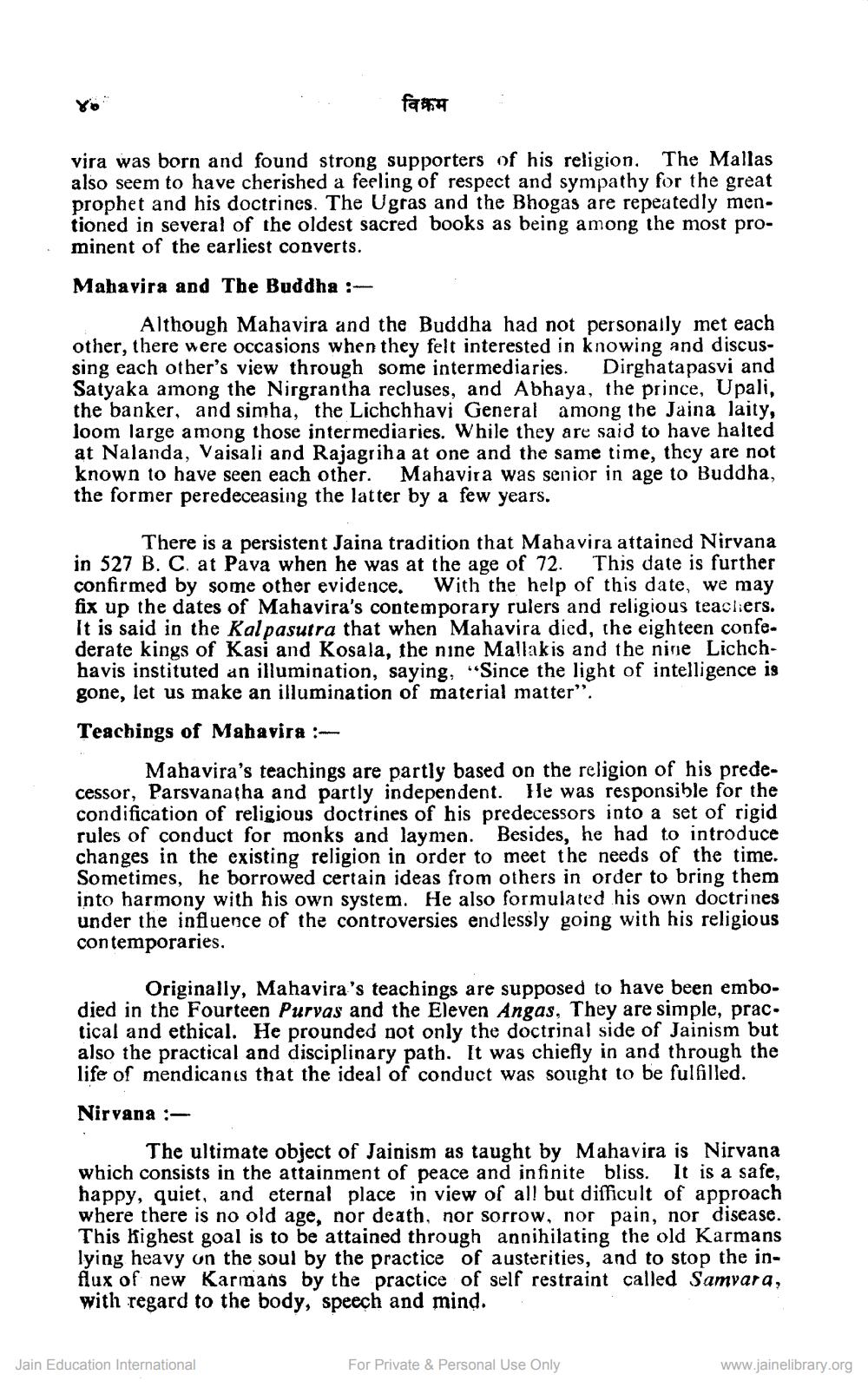________________
विक्रम
vira was born and found strong supporters of his religion. The Mallas also seem to have cherished a feeling of respect and sympathy for the great prophet and his doctrines. The Ugras and the Bhogas are repeatedly mentioned in several of the oldest sacred books as being among the most prominent of the earliest converts.
Maha vira and The Buddha :
Although Mahavira and the Buddha had not personally met each other, there were occasions when they felt interested in knowing and discussing each other's view through some intermediaries. Dirghatapasvi and Satyaka among the Nirgrantha recluses, and Abhaya, the prince, Upali, the banker, and simha, the Lichchhavi General among the Jaina laity, loom large among those intermediaries. While they are said to have halted at Nalanda, Vaisali and Rajagriha at one and the same time, they are not known to have seen each other. Mahavira was senior in age to Buddha, the former peredeceasing the latter by a few years.
There is a persistent Jaina tradition that Mahavira attained Nirvana in 527 B. C. at Pava when he was at the age of 72. This date is further confirmed by some other evidence. With the help of this date, we may fix up the dates of Mahavira's contemporary rulers and religious teacliers. It is said in the Kal pasutra that when Mahavira died, the eighteen confederate kings of Kasi and Kosala, the nine Mallakis and the nine Lichchhavis instituted an illumination, saying, “Since the light of intelligence is gone, let us make an illumination of material matter”.
Teachings of Mahavira :
Mahavira's teachings are partly based on the religion of his predecessor, Parsvanatha and partly independent. He was responsible for the condification of religious doctrines of his predecessors into a set of rigid rules of conduct for monks and laynen. Besides, he had to introduce changes in the existing religion in order to meet the needs of the time. Sometimes, he borrowed certain ideas from others in order to bring them into harmony with his own system. He also formulated his own doctrines under the influence of the controversies endlessly going with his religious contemporaries.
Originally, Mahavira's teachings are supposed to have been embodied in the Fourteen Purvas and the Eleven Angas, They are simple, prac. tical and ethical. He prounded not only the doctrinal side of Jainism but also the practical and disciplinary path. It was chiefly in and through the life of mendicants that the ideal of conduct was sought to be fulfilled.
Nirvana :
The ultimate object of Jainism as taught by Mahavira is Nirvana which consists in the attainment of peace and infinite bliss. It is a safe, happy, quiet, and eternal place in view of all but difficult of approach where there is no old age, nor death, nor sorrow, nor pain, nor disease. This highest goal is to be attained through annihilating the old Karmans lying heavy on the soul by the practice of austerities, and to stop the influx of new Karmans by the practice of self restraint called Samvara, with regard to the body, speech and mind.
Jain Education International
For Private & Personal Use Only
www.jainelibrary.org




